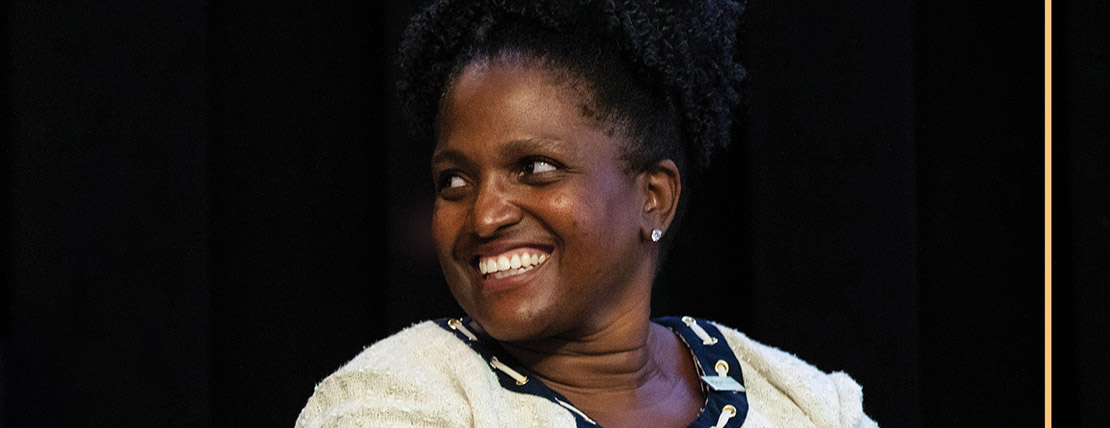Angela Harrell has a unique perspective on how leadership development works for disabled employees at Voya Financial.
Harrell, the organization’s chief diversity and corporate impact officer, identifies as disabled. Since joining the New York-based financial, retirement, investment and insurance company in 2014, she has been involved in Voya’s leadership training and development programs for employees with disabilities as both a participant and a facilitator.
Harrell has “engaged in a plethora of initiatives” related to professional development and inclusion for disabled employees, such as unconscious bias training, situational leadership and disability inclusion for managers.
She also takes a very hands-on approach to helping other Voya employees with disabilities find the career track they want to be on with the organization, through mentorship and employee resource groups (ERGs).
“Voya has a robust mentoring culture that includes both formal and informal programming,” said Harrell, who also serves as a formal mentor for two or three Voya employees throughout the course of a given year.
For example, the company’s Mentoring Advantage program is open to all employees, and Voya encourages members of its 11 employee-led councils (ELCs) — including Voya’s People with Disabilities and Caregivers council — to sign up for mentorship, she said.
Each of these councils count senior executives as sponsors, “which provides an opportunity for mentoring and coaching to the leadership team of the ELCs, as well as the general membership.”
Voya’s People with Disabilities and Caregivers ELC was formed in 2018, and quickly became one of the organization’s fastest-growing groups for individuals of the disabled community and their allies, Harrell added. (According to Voya’s 2021 Impact Report, 3% of the company’s roughly 6,000 employees self-identifies as being disabled or having a special need.)
In terms of development opportunities, fully designed and personalized career trajectories for employees with disabilities are critical, said Jessica Tuman, head of Voya’s Enterprise ERG.
“Career pathing may be different for an employee with disabilities,” Tuman said. “Inclusion in career pathways is required to achieve equal opportunity for individuals with disabilities.”
Managers must be trained and supported to explore career route options with their disabled employees and plan a track that might not be “a traditional one that leads to management and a C-suite position,” Tuman said.
For example, neurodiverse employees, such as a team member with autism, may want to avoid presenting to peers and progressing to a people manager position.
“This is not to say that all employees with autism will have difficulty reading social cues,” Tuman clarified. “For those who do, a career path that increases responsibility and provides opportunity for more challenging projects, but remains in an individual contributor role, may be appropriate.”
That said, some employees with disabilities might not want to map out their career progression at all, she said. “They may be perfectly happy and most comfortable working in the same role for their entire tenure with the organization.”
Disabled employees who do want to progress into leadership roles at Voya, however, are provided with a roadmap to help them get there. Some recent research suggests that more companies are doing the same for employees with disabilities, of whom there are more than 9 million in the American workforce, according to U.S. Census Bureau statistics. Experts say making inclusivity part of every phase of the employee experience helps put disabled workers on the leadership track.
Evaluating the Employee Lifecycle
Accolades might not be the goal of Voya’s efforts geared toward hiring workers with disabilities and cultivating leaders among this employee population. But the company is earning them just the same. For example, Voya Financial was recently named a Best Place to Work for Disability Inclusion for the fifth straight year, earning a perfect 100% score on the 2022 Disability Equality Index (DEI).
The Disability Equality Index (DEI) is a benchmarking tool designed to help companies build a roadmap of measurable, tangible actions to achieve disability, inclusion and equality. More than 400 organizations — including 69 of the companies in the Fortune 100 — participated in the 2022 DEI, a joint initiative of the American Association of People with Disabilities (AAPD) and global business disability inclusion network Disability: IN.
The 2022 report found 126 companies with a senior executive — the CEO or within the first two layers reporting to the CEO — who is internally known as being a person with a disability. That number stood at 99 in the 2021 DEI.
In a statement announcing the findings, Ted Kennedy Jr., co-chair of the Disability Equality Index and AAPD board member, described disability inclusion as “the new frontier of ESG (environmental, social and governance) investing and corporate social responsibility.” Kennedy also stressed the importance of engaging stakeholders with disabilities and weaving disability inclusion “into everything they do” as a way to prepare for the future and create sustainable businesses.
This effort starts with taking a thorough look at the entire talent lifecycle within your organization, said Rachael McCann, senior director of integrated and global solutions and global DEI solutions leader at Willis Towers Watson (WTW).
“This requires looking at data — the inclusivity of benefits and gaps, health and savings outcomes, promotion rotes, performance ratings, fair pay and (any potential) inequities,” McCann said. “This is a best practice for any underrepresented portion of the workforce (subject to data limitations).”
The data gleaned “will tell a story,” she said, and help lead to simple but meaningful action that aids the overall inclusion of employees with disabilities — benefits changes, revisiting language, images and accessibility of communications and recruitment tools, the role of the manager, training and education needs, for instance.
And, any discussion regarding how the organization can be more inclusive of people with disabilities — and how those employees can advance into leadership positions — should include people with disabilities themselves, said David Hoff, program director at UMass Boston’s Institute for Community Inclusion.
“It is also important to recognize that, like any group, people with disabilities are not a monolith,” Hoff told #evolve. “They vary greatly in types of disability, the impact of disability on their lives and their support needs.”
In terms of expanding leadership development opportunities for employees with disabilities, Hoff urged organizations to examine their current leadership development initiatives and ensure that people with disabilities are part of these efforts.
He said that includes avoiding stereotypes and presumptions about the leadership capabilities of people with disabilities, discussing employees’ interest in leadership opportunities as part of performance reviews and including individuals with disabilities in leadership development-related activities.
“When recruiting for managers and leaders, be sure to have people with disabilities in the recruitment pool and as part of the interview team,” Hoff said. “And don’t have employees with disabilities only serving as leaders on disability issues.”
Start at the Beginning
Career development for disabled employees at Voya Financial starts during the hiring phase, and the HR team is a key part of the equation, Tuman said.
“HR plays a big role upfront in the career development process by ensuring that a strong pipeline of qualified candidates, including those with disabilities, is established and maintained,” said Tuman, who also leads Voya Cares Center of Excellence. “Getting employees with disabilities into the workforce really is the first step.”
HR also provides information and education to recruiters and hiring managers to help them understand and feel comfortable with candidates with disabilities, as well as offering resources for appropriate etiquette and accommodations when interviewing and onboarding candidates with disabilities, Tuman said.
The Voya Cares Center of Excellence also partners with HR to facilitate training, onboarding and other programs designed to aid in the retention and development of employees with disabilities, she added.
McCann offers a handful of suggestions for creating the type of leadership development opportunities that help keep disabled employees engaged and aid their growth within the organization.
“Start with understanding roles, responsibilities and stakeholders when specifically thinking about employees with disabilities. Effectively, (determine) who’s on first and what the governance structure is, or if there is one yet.”
Of course, a supportive and inclusive culture is key, said McCann, noting that WTW research finds that employees with disabilities report feeling less psychologically safe in the workplace.
“Employees with disabilities may be hesitant to explore leadership development opportunities if [a sense of] safety or trust isn’t there,” she said. “HR should think about training, removing bias of what it means to have a disability and how the company supports employees with disabilities. DEI (initiatives), ERGs and (the legal team) will all play critical collaborative roles.”
Logistical barriers can be as detrimental to disabled employees’ professional development as psychological ones. These hurdles must also be eliminated.
“Provide universal access as a default, not a request,” said McCann, citing steps such as making closed captioning available and providing voice-to-text technology as examples of ways to make learning and development opportunities more accessible.
As Tuman pointed out, development for disabled employees at Voya starts during hiring, by ensuring that a qualified candidate slate includes applicants with disabilities. McCann suggests that organizations evaluate their job posting process to assess where opportunities are posted and determine whether job descriptions are inclusive of disabled individuals.
“The old traditional approach of tapping someone on the shoulder, relying on word of mouth or network connections does not work for a modern world in which companies try to ensure those with disabilities are at all levels of the organization, especially mid- to senior leadership roles.”
Inclusion is a Business Imperative
The Disability Equality Index (DEI) is a benchmarking tool designed to help companies build a roadmap of measurable, tangible actions to achieve disability, inclusion and equality. This year, 415 organizations — including 69 of the companies in the Fortune 100 — participated in the 2022 DEI, a joint initiative of the American Association of People with Disabilities (AAPD) and global business disability inclusion network Disability: IN.
This year’s edition finds individuals with disabilities stepping into leadership and board roles within their organizations. For example:
- 10% of companies now have documents that govern nominations of board directors that specifically mention the consideration of people with disabilities.
- 6% of organizations report having someone who openly identifies as having a disability serving on their company’s corporate board.
- 74% of companies have expenditures with disability-owned businesses.
The 2022 DEI also shows a high level of engagement in ongoing disability inclusion practices:
- 96% of companies offer flexible work options designed to provide accommodations for employees with disabilities.
- 60% of organizations have external disability hiring goals.
- 50% of employers included in this year’s index are investing in innovative technology to advance digital accessibility.
“The global talent shortage requires companies to rethink how they hire, develop and cultivate talent. Disability inclusion is now a business imperative,” said Jill Houghton, Disability: IN president and CEO, in a statement summarizing this year’s DEI report.
“The Disability Equality Index helps companies identify and incorporate the modern practices that are essential to disability inclusion, equality and belonging. These companies are positioned to win the talent war, strengthen diversity, improve profitability and shareholder returns, and achieve sustainable growth.”
Editor’s Note: Additional Content
For more information and resources related to this article see the pages below, which offer quick access to all WorldatWork content on these topics:







